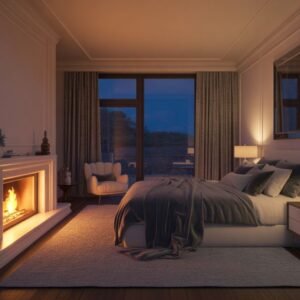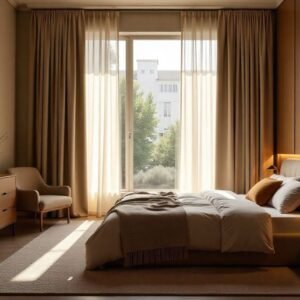Walls set the tone for your space, so why settle for plain and boring walls? If you want warmth, texture, and a touch of elegance, wood tiles for walls are the perfect solution. They capture the beauty of natural wood but come with better durability, easy maintenance, and endless design possibilities.
Whether you are after a cozy rustic feel, a modern minimalist vibe, or a bold statement wall, wood tiles can transform any space effortlessly. From living rooms to bedrooms and even bathrooms, these tiles bring a natural charm without the worry of warping or constant maintenance. Plus, they are easier to install than traditional wood panels, making them a practical yet stunning choice. In this article, we will explore several types of wood tiles for walls. So, let’s get started!
Types of Wood Tiles for Walls
Wood tiles for walls come in various types, each catering to different design preferences, functional needs, and budgets. Here’s a detailed look at the most popular types of wood tiles available for walls:
Natural Wood Tiles

These solid wood tiles retain the natural grain patterns, knots, and texture of wood. They are best for adding a warm, organic, and authentic look to interiors. Apart from having a unique and luxurious appearance, wooden tiles are also durable and timeless.
Engineered Wood Tiles
These tiles comprise a thin layer of real wood veneer bonded to a core made of plywood, MDF, or HDF. They are best for achieving a natural wood look with added durability and stability. These tiles are more resistant to moisture and warping than solid wood. They are also cost-effective compared to natural wood tiles.
Reclaimed Wood Tiles

These tiles are made from repurposed wood sourced from old furniture, barns, or pallets. These tiles have a rustic, vintage charm. They offer sustainable and eco-friendly designs with character. However, they may require extra treatment for pests or durability.
Wood-Look Tiles
These ceramic or porcelain tiles mimic the appearance of natural wood through advanced printing techniques. They are suitable for spaces that require a wood-like aesthetic but with added durability and low maintenance. These tiles are resistant to water, scratches, and stains. However, they do not have the same texture or warmth as real wood.
Also Read: From Dull to Dazzling: Upgrade Your Home with Mirror Tiles for Walls
3D Textured Wood Tiles

These tiles have a sculpted or embossed surface to create a three-dimensional effect. They can feature geometric patterns, wavy textures, or carved designs. They are best for adding depth and a statement-making element to feature walls. They are available in various designs and patterns. However, due to their textured surfaces, they may be more challenging to clean.
Laminate Wood Tiles
These tiles are a photographic layer of wood design sealed under a protective layer, backed by fiberboard. They offer a budget-friendly solution that still provides a wood-like appearance. They are available in a variety of patterns and finishes. However, they are less durable than natural or engineered wood.
Bamboo Wood Tiles

These tiles are made from bamboo, a sustainable and eco-friendly alternative to traditional wood. They help create a modern or tropical aesthetic with a focus on sustainability. However, bamboo wood tiles require proper sealing to prevent water damage.
Parquet Wood Tiles
These tiles are crafted using Small pieces of wood arranged in geometric patterns like herringbone, chevron, or basketweave. They are best for adding intricate patterns and a touch of elegance to walls. However, these tiles come at a higher cost compared to standard tiles.
Peel-and-Stick Wood Tiles

These are Lightweight wood or wood-look tiles with an adhesive backing designed for easy, DIY installation. They are best for renters or those looking for a non-permanent, budget-friendly solution as they can be removed without damaging the wall. However, they are less durable than other tiles.
Waterproof Wood Tiles
These are specially treated wood or wood-look tiles designed to resist water damage. They are best for areas exposed to moisture, such as bathrooms or kitchens. However, they are limited in availability in natural wood finishes.





